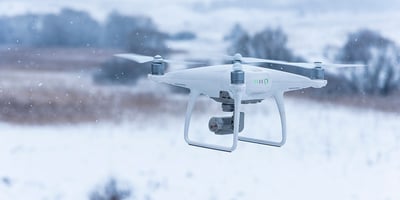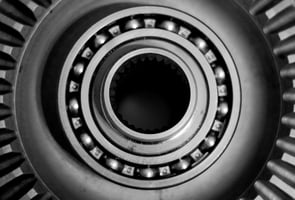Cold environments can significantly influence how robotic systems operate, perform, and age. For...
The Critical Role of Bearings in Humanoid Robotics

According to Morgan Stanley Research, the humanoid robotics market is projected to reach $5 trillion by 2050, with over 1 billion humanoid robots potentially in operation worldwide. This growth includes not only the robots themselves but also the expansion of supporting supply chains, maintenance, and service infrastructure.
As humanoid robots become increasingly advanced, capable of replicating human motion, navigating complex environments, and interacting seamlessly with people, the role of internal mechanical systems becomes more critical. Among these, bearings are fundamental components that enable smooth, precise, and reliable movement.
Bearings are integrated throughout a robot’s structure, particularly in joints, actuators, and other key points of articulation. With a variety of bearing types available, each tailored to specific functions, they are essential in delivering the agility, stability, and responsiveness required for sophisticated humanoid performance.
By minimizing friction, supporting loads, and guiding motion, bearings play a vital role in enabling human-like movement. Unlike traditional industrial robots, which often operate within limited ranges and perform repetitive tasks, humanoid robots require multi-axis flexibility and fluid articulation, all within a compact and lightweight design. Bearings make this level of motion and control possible.
Bearing Types and Their Use
Ball bearings are the most commonly used type, designed to handle both radial and axial loads while minimizing friction. Their compact size and ease of integration make them ideal for high-speed, low-load applications, especially in the small joints of humanoid limbs, such as wrists, elbows, shoulders, hands, and fingers. Miniature ball bearings are also essential in small, high-speed motors, helping reduce wear and maintain precision.
Roller bearings use cylindrical rollers instead of balls, allowing them to support much heavier radial loads than ball bearings. This makes them essential for structural stability in humanoid robots, especially in bipedal movement. They are commonly used in leg joints and load-bearing axes where the robot must handle significant weight and force during walking and balancing. Roller bearings are also ideal for high-load areas that require strength and stability, such as the waist and hip mechanisms.
Needle bearings are a type of roller bearing that use long, thin rollers, making them ideal for space-constrained designs without sacrificing performance. They are especially well-suited for rotary actuators, hinge assemblies, and compact limb joints, where they deliver both strength and rigidity in tight spaces.
Specifically designed to handle axial (thrust) loads, thrust bearings are commonly used in rotating parts like neck mechanisms and ankle joints. In upright robots, they play a crucial role by enabling the smooth transmission of vertical forces without adding friction that could restrict movement.
Spherical bearings offer a greater degree of freedom and range of motion than other bearing types, enabling rotation around multiple axes, like a ball-and-socket joint. This makes them well-suited for applications that require complex, multi-directional movement, such as hip and shoulder joints in humanoid robots, as well as gimbal systems for cameras and sensors.
Crossed-roller bearings use cylindrical rollers arranged in a crisscross pattern, providing exceptional rigidity and multidirectional precision. They are ideal for high-precision, compact robotic applications—such as wrist joints, vision systems, and manipulators, where high stiffness and accuracy are critical without compromising space.
As humanoid robotics continues to advance, the mechanical systems enabling movement must evolve in tandem. Bearings will remain a key component of these systems, delivering the precision, speed, and reliability needed for robots to function safely and effectively in human environments. Bearings may be small, but their impact on humanoid robotics is immense. Each type, from compact ball bearings to load-bearing rollers, serves a purpose in bringing lifelike motion to machines. Understanding how they function and where they are used helps engineers build robots that walk, lift, and interact with a level of sophistication once thought to be purely science fiction.
Whatever you’re designing, the right bearing can make all the difference!
Want to explore more bearing options for your robotic project?
Reach out to our engineering team, browse our eStore, or visit us at RoboBusiness, Santa Clara, CA, October 15 – 16, 2025, Booth # 323.



